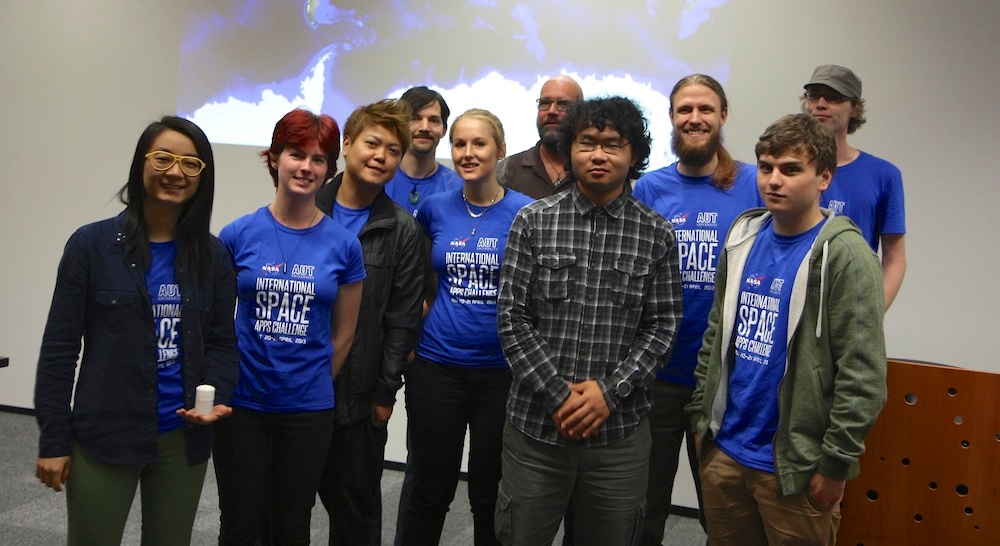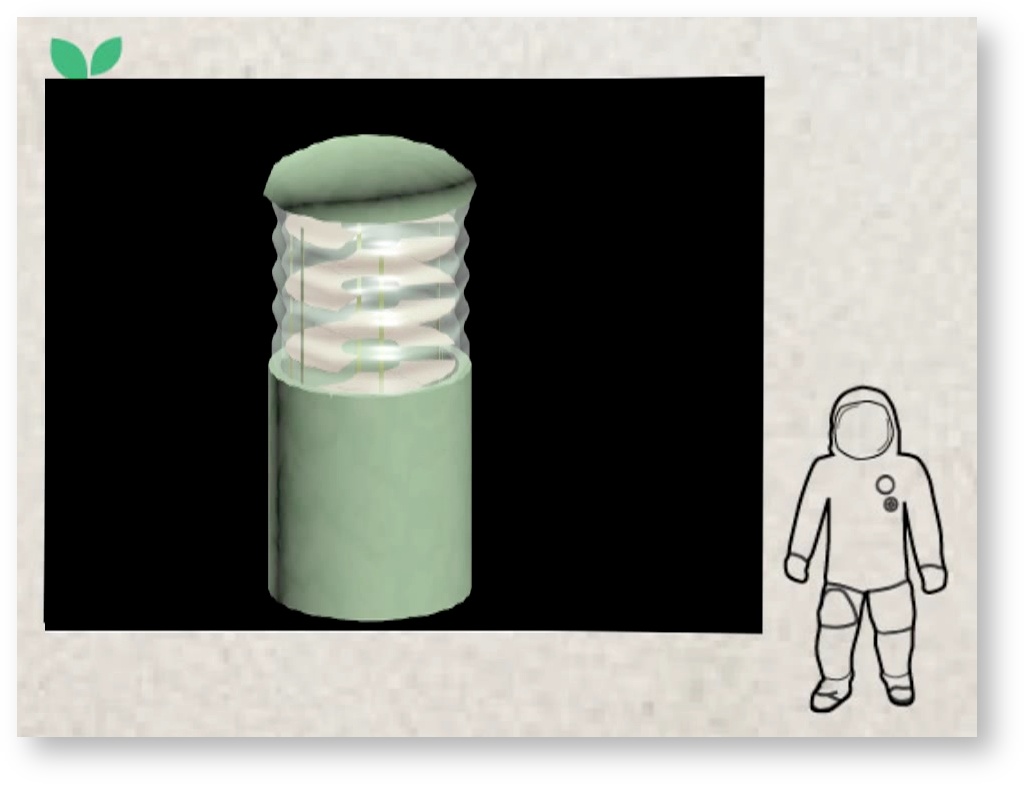| Challenge | Deployable Greenhouse |
|---|---|
| Team Project Page | Captain Cook |
| Auckland Placing | #3 |
Placing third in the Auckland judging for the International Space Apps Challenge, was team "Captain Cook".
Their challenge tasked them to design a greenhouse suitable for pre-deployment on placed like the Moon and Mars. The team didn't have a biology or engineering background, so in tackling this task they took a different approach – with a focus on the humanisation of gardening on other planets, rather than trying to design the most-efficient greenhouse.
At a high level, they proposed the following:
- Build a greenhouse that uses a physical volume similar in shape to proposed human habitats from popular renders by SpaceX, NASA, etc. (e.g. this picture)
- A focus on manual tending of the plants, rather than automated systems - providing therapeutic benefits for the astronauts
- Cafe culture – thinking of the greenhouse as a place of relaxation: read a book surrounded by your plants, etc.
- Basic engineering designs, which provided for storage space, re-use of internal systems for things such as seats for astronauts, etc.
Project Presentation
Commentary
The final presentation only shows part of the story, and missed the blood sweat and tears behind the scenes. I spent the weekend jumping around and talking to the teams, so here are some additional comments and thoughts which you may find useful:
- The team had a fairly broad and flexible brief, with quite a bit of engineering and technical requirements – but unfortunately no specific team members with these skills. As a result, they took much more of a high-level approach to the challenge (as opposed to say optimising oxygen exchange).
- The team split into two sub-groups – one with a presentation focus, and the other greenhouse design. Their early focus on the presentation is obvious when you compare the final presentation from the groups.
- However they spent almost the first 30 hours brainstorming through various ideas and design elements, but had difficulty settling on a final design.
- Once given some external support and a possible framework to test the practicality of their ideas against – they quickly worked through and sketched out a final design, allowing the 3D modelling to begin and concrete work on the presentation.
- The delay in deciding on the high-level design however meant some of the extra detail and unique design elements they'd brainstormed, were glossed over of missed in the presentation, and in my opinion, this ultimately cost them in the judging.
- The 3D model, while great in the time permitted, could have substantially benefited with more time – and more clearly presenting the greenhouse layout in each of the various configurations.
- They also had done a brief Skype and Google Hangout with the challenge organiser, who had emphasised the importance of a number of the human-elements of the greenhouse – but unfortunately they didn't communicate this to the judges. This, combined with the absence of more examples of subsystem detail ultimately cost them.
- Here are a few of the features they came up with, but didn't really communicate:
- The ability for astronauts to come in and service plants and adjust the height of racks to suit different crops
- Astronauts could effectively have their own rack of plants – their own 'garden' – and the sense of ownership and pride that goes along with this
- The flight/transit configuration was quite efficient and allowed for a lot of additional storage – seeds sitting ready in their growth medium, tightly stacked on the racks in the top of the greenhouse, but with lots of space below for priming resources such as water, seeds, gasses, and potentially storage for other base components.
- Some good work put into thinking how habitat deployment would occur - such as using the lower pressure outside to transfer internally stored water into expandable bags on the outer side.
- Any machinery, gas storage, etc which would otherwise take up space in the greenhouse - could be stored in a low cabinet that could double as a couch and workbench - giving somewhere they could sit and relax while sitting on, with their plants lowered down nearby.
- Potential use of the greenhouse volume during the day for other activities – possibly as a kitchen.

